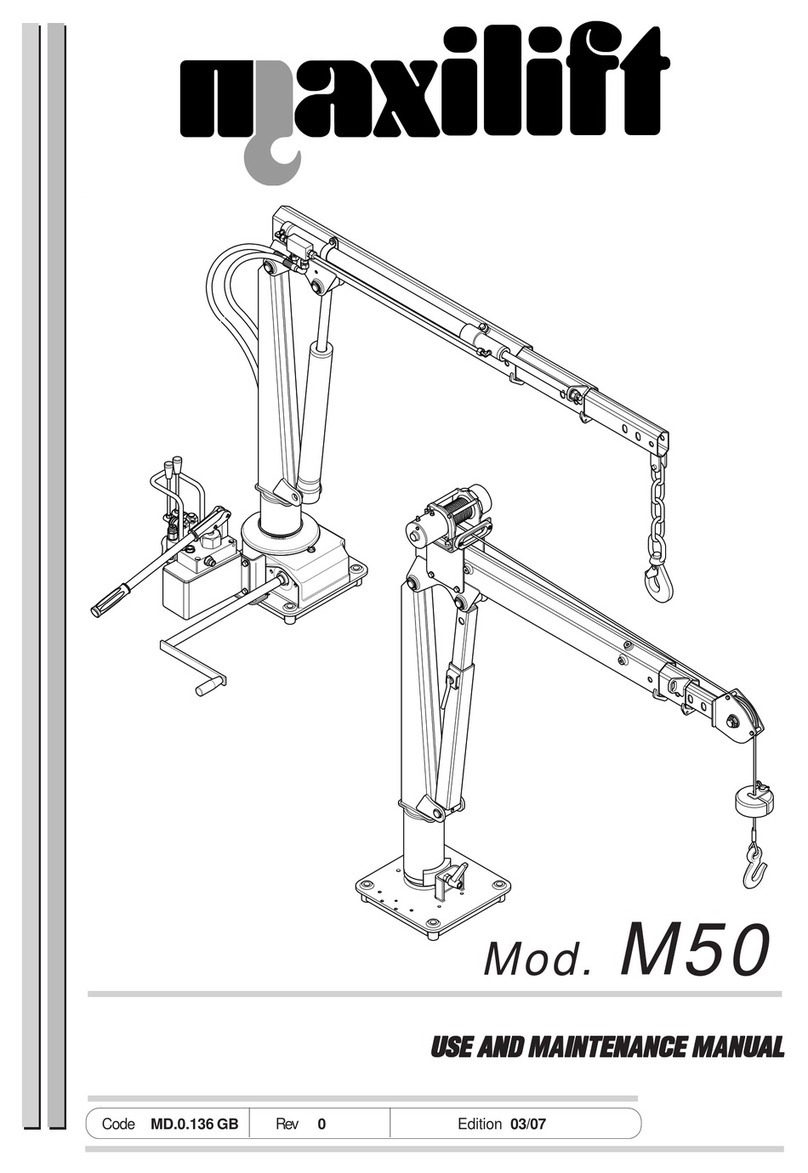II
7 OPERATING INSTRUCTIONS ......................................................................... PAGE 18
7.1 General attentions .......................................................................................................................................... “ 18
7.2 Stabilizing the truck ......................................................................................................................................... “ 19
7.3 Opening the crane .......................................................................................................................................... “ 21
7.4 Closing the crane ........................................................................................................................................... “ 21
7.5 Winch system operation ................................................................................................................................. “ 21
7.6 Before starting traveling on road .................................................................................................................... “ 21
7.7 Main errors occurring when operating the crane ........................................................................................... “ 21
7.8 Standard hand signals ................................................................................................................................... “ 22
8 PUTTING THE CRANE INTO SERVICE ................................................................ “ 23
8.1 Ten rules for the perfect crane operator ......................................................................................................... “ 23
8.2 Daily check list ................................................................................................................................................ “ 23
8.3 Crane protection and storage ........................................................................................................................ “ 23
8.3.1 Short shutdowns ............................................................................................................................................ “ 23
8.3.2 Long shutdowns ............................................................................................................................................. “ 24
9 MAINTENANCE .................................................................................................... “ 25
9.1 Warnings ........................................................................................................................................................ “ 25
9.2 Maintenance prescriptions ............................................................................................................................. “ 25
9.3 Maintenance schedule ................................................................................................................................... “ 26
9.3.1 Daily checking ................................................................................................................................................. “ 26
9.3.2 Monthly checking ............................................................................................................................................ “ 27
9.3.3 Checking every six months ............................................................................................................................. “ 27
9.3.4 Others ............................................................................................................................................................. “ 27
9.4 Crane servicing ............................................................................................................................................... “ 28
9.4.1 Oil level checking ............................................................................................................................................ “ 28
9.4.2 Oil change ....................................................................................................................................................... “ 28
9.4.3 Wormgear assembly control .......................................................................................................................... “ 29
9.4.4 Greasing the hydraulic boom sections .......................................................................................................... “ 29
9.4.5 Wear pads check and replacement ............................................................................................................... “ 29
9.5 Greases and oils reference table .................................................................................................................. “ 30
9.6 Wire rope ........................................................................................................................................................ “ 31
9.6.1 Wire rope inspection ...................................................................................................................................... “ 31
9.6.2 Rope replacement .......................................................................................................................................... “ 31
9.6.3 Wire rope lubrication ...................................................................................................................................... “ 31
9.7 Possible faults and relevant remedies .......................................................................................................... “ 33
10 TECHNICAL DATA ............................................................................................... “ 36
Overall dimension ...........................................................................................................................................
Performances ..................................................................................................................................................
Load chart table ...............................................................................................................................................
11 WIRING AND HYDRAULIC DIAGRAMS ................................................................ “ 38
11.1 Wiring diagrams ............................................................................................................................................. “ 38
11.1.1 Pendant and control wirings .......................................................................................................................... “ 38
11.1.2 3300 Wiring diagram ...................................................................................................................................... “ 40
11.2 Hydraulic diagrams ........................................................................................................................................ “ 41
11.2.1 Hydraulic diagram 3300W .............................................................................................................................. “ 41




























